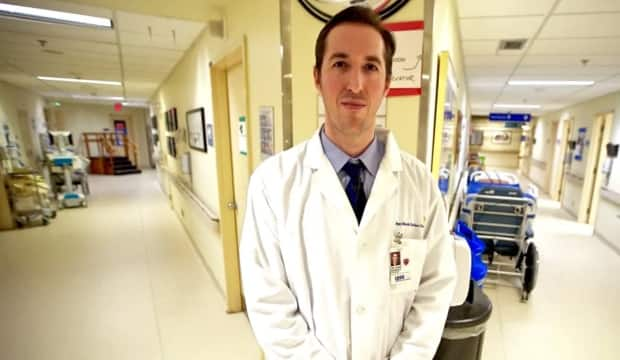B.C. doctor says pilot project shows more rapid testing could help curb COVID-19 transmission
A B.C. respirologist involved in a COVID rapid testing pilot project ending next month says the tests, so far, are proving to be a useful, inexpensive and simple tool to aid in the defence against COVID-19 transmission.
As rapid testing pilots for COVID-19 near the end of their research period, doctors monitoring them say evidence so far shows it could soon be time to deploy them to schools, businesses, long-term care homes and anywhere else people congregate.
On Monday, Provincial Health Officer, Dr. Bonnie Henry said while she's not opposed to anything that can help prevent transmission in care homes, she believes rapid testing is a tool that will use up a lot of resources.
"It's the time and the medical people that need to be there to monitor the tests and look at how they're being done and how they're being performed on site," Henry said.
Henry says each rapid test takes at least three people to administer and monitor.
But Dr. Don Sin, a respirologist at St. Paul's Hospital and a professor at the University of British Columbia, said early results of the pilot project show the tests can be "very fast, relatively easy to deploy and inexpensive."
The rapid tests, involving a nasopharyngeal (nose) swab, can take about 15 minutes to deliver results according to Sin, and scientists credit it with about a 75 per cent detection rate. However, when used on patients with clear COVID-19 symptoms and an elevated viral load, the scientists were able to raise the detection rate to 98.8 per cent.
Sin said, while he supports Dr. Henry's decisions, it shouldn't usually be necessary for three people to administer one test.
"I can't speak for Dr. Henry, but in the vast majority of cases, you don't need three people to do this ... one trained individual can administer this test," Sin said.
When asked about this, the Ministry of Health said it had nothing further to add to the statement Henry made at her Monday news conference.
Sin said there is no special equipment or training required to use the test kits. He said those administering it glove and mask up, prepare the liquid for the test, take the swab, put the swab in the tube, follow a few instructions and wait 15 minutes.
"Like a pregnancy test, if you get two red lines on the paper, you have COVID. If only one line shows up, you don't," he said.
Sin said he's been working directly with the WestJet-YVR COVID-19 rapid testing study that launched in late November, and while there's still another month left in the research project, the data indicates rapid testing would be helpful.
"I think rapid testing has a certain role to play in reopening the economy safely. Places like YVR and other airports, universities. I would imagine long-term care facilities and the like could benefit from rapid testing," Sin said.
Dr. Isaac Bogoch, an infectious disease specialist out of Toronto General Hospital, said there needs to be additional steps that are taken to create safer workplaces, schools and community settings.
Hes aid he believes, much like Dr. Sin, data and research proves rapid testing is under-utilized but highly effective.

He said while rapid testing isn't a diagnostic tool, there are obvious benefits.
"Here's a wonderful opportunity to deploy these tests as screening tools ... It's a public health measure, not a clinical measure, to really identify people with no symptoms or very, very mild symptoms that are contagious."
Both Bogoch and Sin said on Tuesday the benefits of rapid tests far outweigh the drawbacks and could be the catalyst, and have already been, to preventing further outbreaks and deaths.
For example, Sin said a worker at one of B.C.'s long-term care facilities that is part of the rapid testing pilot tested positive on the rapid test and was immediately isolated.

